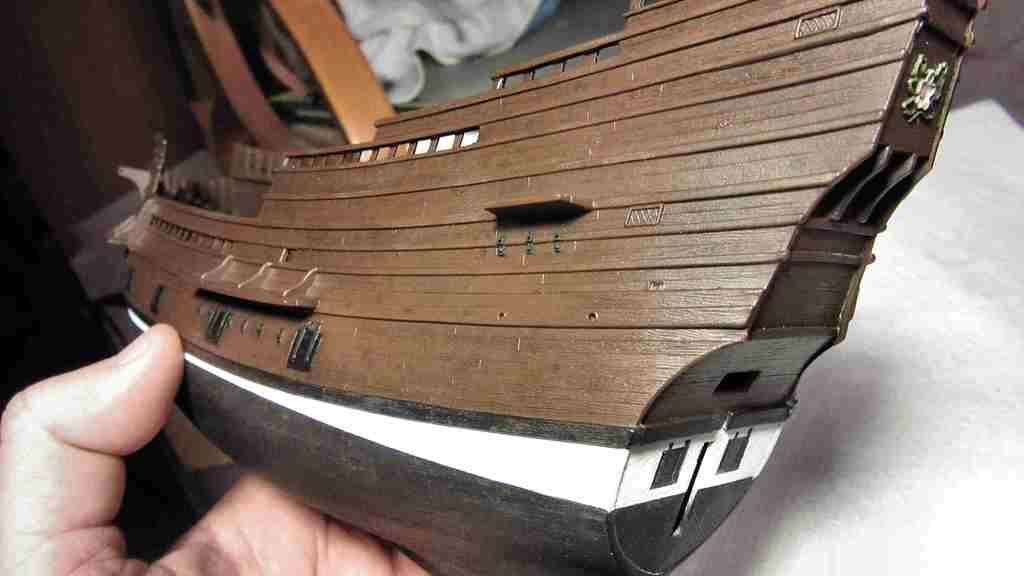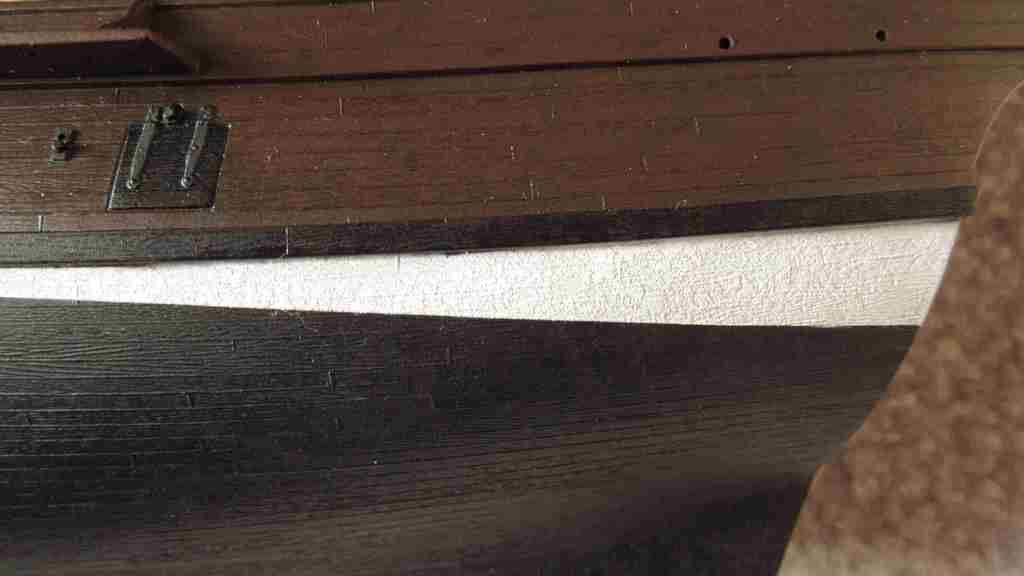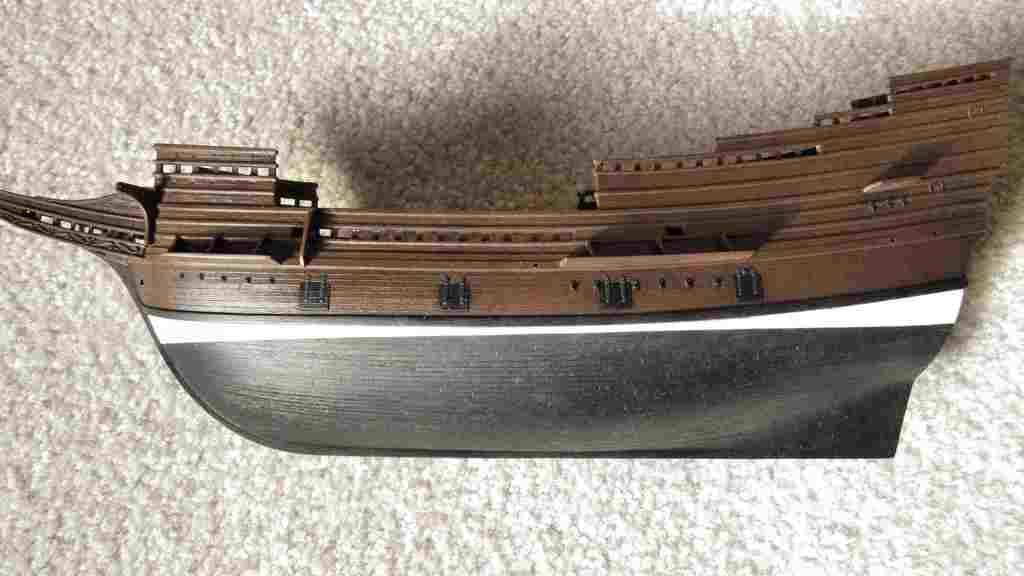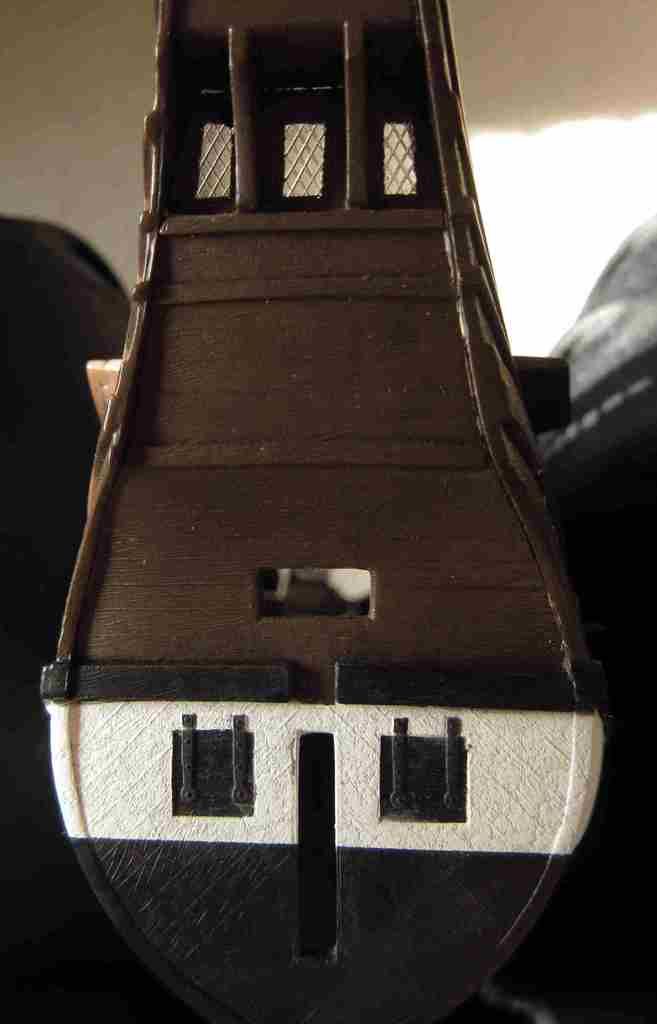The gap is filled in.

Below: A close-up of the paint. The craggily appearance is somewhat of a happy accident. I did the salt technique as I have used it before, but never has this happened. I can think of one possible explanation. I might have added too much Tamiya Flat Base to the Tamiya flat white.
Why add flat to flat? I have found that Tamiya flat paints are not flat enough for my taste, so I add more of their flattening agent. When I mixed this paint batch I remember thinking, dang, I poured a bit too much of the flat base. Maybe it was a combination of that, the salt, and a heavier coat of paint. I had to go heavier on the paint with it being a white.
The photo does not show the subtle discolorations that I created by doing the salt technique. The camera just can't seem to image it.
I have found Mayflower replica photos on the net showing similar weathering, if not worse. In the end, I am ok with how the process turned out.

Below: A washed out view, but it gives you the idea of how the white looks next to the wale and waterline. I might dirty-down the white some with a very very weak oil wash. I am on the fence about that. TBD.

Below: A very distorted view of the transom. The camera's Macro setting can really distort lines, and in this case, it really does. None the less, the main purpose of this photo was to talk about the windows. As you can see, I have unmasked them.
Some of you recall that I used Bare Metal Foil to mask the windows. I had some concerns. I have not worked with BMF before, and I wondered how the foil would hold up to staying on the model for months on end, while I worked out the various painting processes.
I think that it did Ok. I did get some paint-wicking underneath the foil, but I kind of expected that. The raised latticework of the windows makes it almost impossible to get a mask to completely seal flat, especially at this scale. What might have helped in all this is if I could have laid a lighter coat of paint to seal the edges first, followed by a heavier coat for coverage. Those recesses are pretty dang small, and it was hard to get the paint-spray in there. So, I had to get in close, and that lead to heavier coverage.
I suppose in hindsight, I could have painted the window assembly prior to install. That would have given me much more AB control. Unfortunately, I did not have a grip on the paint/weathering process to think that far ahead. I think the latter is the best option.
One last comment about the BMF. It did not come up off the windows too well. I hoped that it would pull off in larger pieces, but this was not the case. It pretty much broke off in flakes making it somewhat of a pain to remove. I suspect this happened because of the long duration that it was in place.
